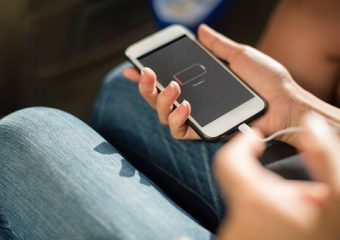
Researchers at the Advanced Technology Institute (ATI) of the University of Surrey have developed innovative nanogenerators that harness energy from everyday activities, such as running, to power wearable devices.
In their study, published in the journal Science Direct, it is described how flexible nanogenerators can convert mechanical energy, generated by simple movements, into electrical energy with significantly greater efficiency than previous technologies.
“The idea of nanogenerators is to capture and utilize energy from everyday movements, such as morning runs, mechanical vibrations, ocean waves, or door openings. The key innovation with our nanogenerator is that we have finely tuned the technology with 34 small energy collectors that use a laser technique that can be scaled up for production to further increase energy efficiency,” stated the study’s lead author, Delovar Husein.
While the concept of nanogenerators is not new, the solution from ATI experts brings a revolutionary advancement in energy harvesting, showing a 140-fold increase in power density compared to conventional nanogenerators.
More:
- Montenegro Adopts Law on the Use of Renewable Energy Sources
- Rostock: Regional Development With Wind Energy
- Giant Clams – Master Engineers of Solar Energy and Efficiency
Nanogenerators operate on the principle of the triboelectric effect, where materials become electrically charged when they come into contact and then separate (like when rubbing a balloon on hair). This process allows the device to convert even the simplest movements into useful electrical energy.
“What is truly exciting is that our small, high-energy-density device could one day compete with the power of solar panels and could be used to power anything from self-powered sensors to smart home systems that operate without the need for battery replacement,” added Husein.
Professor Ravi Silva, Director of the Advanced Technology Institute, highlighted the potential of nanogenerators in the future of energy, especially in the context of the rapid development of IoT technologies.
“With increasing technology around us, it is predicted that we will have over 50 billion IoT devices in the coming years that will need power. Local green energy solutions are needed, and this could be a convenient wireless technology that uses energy from any mechanical movement to power small devices. It offers the scientific and engineering community an opportunity to find innovative and sustainable solutions to global challenges,” said Professor Silva.
The development of these nanogenerators could significantly contribute to the transformation of the energy sector, providing sustainable solutions for powering devices in everyday situations. From smart homes to wearable sensors, the application of these devices could enable long-term power supply without the need for frequent battery replacements.
